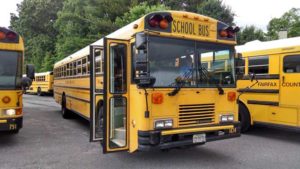
A Loudoun County school bus was recently involved in an accident while bringing children to Mountain View Elementary School in Purcellville. Sixteen of the 37 children riding the bus were taken to Inova Loudoun Hospital with mostly minor injuries. The bus driver was also taken to the hospital, and the cause of the accident remains under investigation.
Earlier in the month, two students received minor injuries after being hit by a Loudoun County school bus while walking to Belmont Ridge Middle School in the Lansdowne area of Leesburg. In the wake of these accidents, many Loudoun parents are left wondering how safe their children are in and around school buses.
Despite these unfortunate accidents, school bus transportation remains one of the safest forms of transportation in the country. Nonetheless, an estimated 8,500 to 12,000 children are injured in school bus-related crashes annually.
Of these, 96 percent have injuries that are considered minor (mostly scrapes, bumps and bruises). The other four percent—about 350 to 475 each year—have serious injuries, broken bones or worse.
About 30 school-age children die in school bus-related traffic crashes each year. Nearly two-thirds were killed by school buses; five percent by vehicles functioning as school buses; and 30 percent by other vehicles involved in the crashes.
The Danger Zone
Most of the school-age children killed in school bus-related crashes each year are pedestrians, half of whom are between the ages of 5 to 7 years old. They are hit in what’s known as the Danger Zone around the bus, either by a passing vehicle or by the bus itself. The Danger Zone is a 10-foot wide area on all sides of a school bus—an area where children are in the most danger of being hit.
Young children are most likely to be hit because they:
• Hurry to get on or off a school bus
• Act before they think and have little experience with traffic
• Assume motorists will see them and will wait for them to cross
• Don’t always stay within the bus driver’s sight
Parents should teach their children to stay 10 feet away from a school bus (or as far away as they can) and never go behind it. Children should also be instructed to take five giant steps in front of the bus before crossing so the driver can see them.
School Bus Stop Law for Motorists
When approaching a school bus with flashing signals and an extended stop sign on a public or private road, you must stop and remain stopped until all children are clear of the roadway and the bus moves again.
You must also stop if the bus is loading or unloading children and the signal devices are not functioning properly. You do not have to stop, however, if you are traveling in the opposite direction on roadways separated by a physical barrier or unpaved median area.
In Virginia, if you are convicted of passing a school bus that is stopped to load or unload passengers, you will receive a six-point violation that will stay on your record for 11 years.